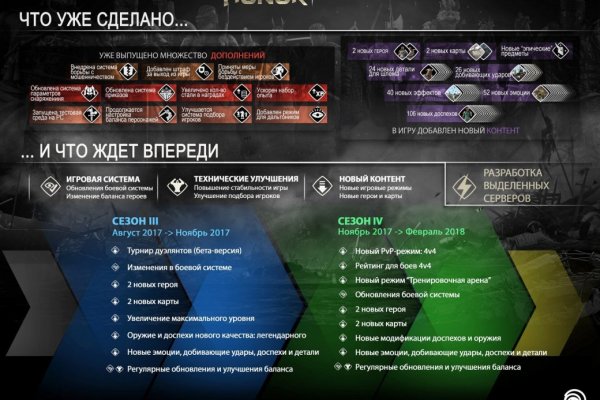Hydra web com

Building Web krncc APIs seems still more an art than a science. How can we build APIs such that generic clients can easily use them? And how do we build those clients? Current APIs heavily rely on out-of-band information such as human-readable documentation and API-specific SDKs. However, this only allows for very simple and brittle clients that are hardcoded against specific APIs. omg, in contrast, is a set of technologies that allow to design APIs in a different manner, in a way that enables smarter clients.Publications/PresentationsM. Lanthaler, “The Web Is Changing — From Strings to Things,” presented at the O'Reilly Open Source Conference 2014 (OSCON) in Portland [video].M. Lanthaler, “Why and How to Optimize Your Data Architecture for an Integrated Future,” presented at Presented at APIcon UK 2014 in London, England. [video].T. Hoppe, “REST APIs Today and Tomorrow - an Essay,” presented at several Meetups.M. Lanthaler, “Creating Awesome Web APIs is a Breeze,” presented at the O'Reilly Open Source Conference 2014 (OSCON) in Portland [video].T. Pluskiewicz, “JSON-LD and omg - Hypermedia API alternatively,” presented at Meet.js Wrocław 2014.M. Lanthaler, “A Deep Dive into JSON-LD and omg,” presented at APIcon San Francisco 2014.M. Lanthaler, “Stop Reinventing the Wheel! Use Linked Data to Build Better APIs,” presented at APIcon San Francisco 2014.M. Lanthaler, “The Web 3.0 is just around the corner. Be prepared!,” presented at APIdays Berlin, 2014.R. Verborgh, “The Lonesome LOD Cloud,” presented at the 4th USEWOD Workshop on Usage Analysis and the Web of Data, 2014.R. Verborgh, M. Vander Sande, P. Colpaert, S. Coppens, E. Mannens, and R. Van de Walle, “Web-Scale Querying through Linked Data Fragments,” in Proceedings of the 7th Workshop on Linked Data on the Web (LDOW2014) at the 23nd International World Wide Web Conference (WWW2014), 2014 [slides].M. Lanthaler, “Full-on Hypermedia APIs with omg,” presented at the API Strategy & Practice Conference, ссылка 2014 [video].R. Verborgh, “Hypermedia cannot be the engine,” presented at the API Strategy & Practice Conference, 2014.C. Pautasso, E. Wilde, and R. Alarcon (editors), “REST: Advanced Research Topics and Practical Applications,” Springer New York, 2014.L. Richardson, M. Amundsen, and S. Ruby, “RESTful Web APIs,” O’Reilly Media, 2013.M. Lanthaler, “Building Next-Generation Web APIs with JSON-LD and omg,” presented at Symfony Live Portland 2013 [slides] [video].M. Lanthaler and C. Gütl, “omg: A Vocabulary for Hypermedia-Driven Web APIs,” in Proceedings of the 6th Workshop on Linked Data on the Web (LDOW2013) at the 22nd International World Wide Web Conference (WWW2013), 2013 [slides].M. Lanthaler, “Creating 3rd Generation Web APIs with omg,” in Proceedings of the 22nd International World Wide Web Conference (WWW2013), 2013, pp. 35–37 [slides].M. Lanthaler and C. Gütl, “Model Your Application Domain, Not Your JSON Structures,” in Proceedings of the 4th International Workshop on RESTful Design (WS-REST 2013) at the 22nd International World Wide Web Conference (WWW2013), 2013, pp. 1415–1420 [slides].© 2012–2018, omg W3C Community Group
Hydra web com - Кракен без зеркала
, using the Intruder feature within BurpSuite is an easier way to run brute-force attacks, but the effectiveness of the tool is greatly reduced when using the free community version. Instead of dealing with slow brute-force attempts, I decided to give omg a try.What we’re breaking intoIf you’re unfamiliar with https://hackthebox.eu, I highly recommend checking them out. Click here to check out my HackTheBox related content.NINEVAH sits on HackTheBox servers at IP address 10.1.10.43. I found a couple login pages at the following URLs. These are the addresses we’re going to attempt to break into.1st Address: http://10.10.10.43/department/login.php2nd Address: https://10.10.10.43/db/index.phpUsing omg to Brute-Force Our First Login Pageomg is a fairly straight forward tool to use, but we have to first understand what it needs to work correctly. We’ll need to provide the following in order to break in:Login or Wordlist for UsernamesPassword or Wordlist for PasswordsIP address or HostnameHTTP Method (POST/GET)Directory/Path to the Login PageRequest Body for Username/PasswordA Way to Identify Failed AttemptsLet’s start piecing together all the necessary flags before finalizing our command.Specifying UsernameIn our particular case, we know that the username Admin exists, which will be my target currently. This means we’ll want to use the -l flag for Login.
-l adminNote: If you don’t know the username, you could leverage -L to provide a wordlist and attempt to enumerate usernames. This will only be effective if the website provides a way for you to determine correct usernames, such as saying “Incorrect Username” or “Incorrect Password”, rather than a vague message like “Invalid Credentials”.Specifying PasswordWe don’t know the password, so we’ll want to use a wordlist in order to perform a Dictionary Attack. Let’s try using the common rockyou.txt list (by specifying a capital -P) available on Kali in the /usr/share/wordlists/ directory.
-P /usr/share/wordlists/rockyou.txtIP Address to AttackThis one is easy!
10.10.10.43Specifying MethodThis is where we need to start pulling details about the webpage. Let’s head back into our browser, right-click, and Inspect Element.A window should pop-up on the bottom of the page. Go ahead and select the Network tab.Right away, we see a couple GET methods listed here, but let’s see what happens if we attempt a login. Go ahead and type in a random username/password, and click Log In.Of course our login attempt will fail, but we’re able to see that this website is using a POST method to log-in by looking at the requests.Easy enough, now we know what method to specify in our command!
http-post-form
Note: You’ll need to enter https if you’re attacking a site on port 443.Specifying the Path to AttackSo far, we’ve only told the tool to attack the IP address of the target, but we haven’t specified where the login page lives. Let’s prepare that now.
/department/login.phpFinding & Specifying Location of Username/Password Form(s)This is the hardest part, but it’s actually surprisingly simple. Let’s head back over to our browser window. We should still have the Inspect Element window open on the Network Tab. With our Post request still selected, let’s click Edit and Resend.Now we see a section called Request Body that contains the username and password you entered earlier! We’ll want to grab this entire request for omg to use.In my case, the unmodified request looks like this:
username=InfiniteLogins&password=PasswordBecause we know the username we’re after is “admin”, I’m going to hardcode that into the request. I’ll also replace the “Password” I entered with ^PASS^. This will tell omg to enter the words from our list in this position of the request. My modified request that I’ll place into my omg command looks like this:
username=admin&password=^PASS^Note: If we desired, we could also brute-force usernames by specifying ^USER^ instead of admin.Identifying & Specifying Failed AttemptsFinally, we just need a way to let omg know whether or not we successfully logged-in. Since we can’t see what the page looks like upon a successful login, we’ll need to specify what the page looks like on a failed login.Let’s head back to our browser and attempt to login using the username of admin and password of password.As we saw before, we’re presented with text that reads “Invalid Password!” Let’s copy this, and paste it into our command:
Invalid Password!Piecing the Command TogetherLet’s take all of the components mentioned above, but place them into a single command. Here’s the syntax that we’re going to need.sudo omg <Username/List> <Password/List> <IP> <Method> "<Path>:<RequestBody>:<IncorrectVerbiage>"After filling in the placeholders, here’s our actual command!
sudo omg -l admin -P /usr/share/wordlists/rockyou.txt 10.10.10.43 http-post-form "/department/login.php:username=admin&password=^PASS^:Invalid Password!"Note: I ran into issues later on when trying to execute this copied command out of this WordPress site. You may need to delete and re-enter your quotation marks within the terminal window before the command will work properly for you.After a few minutes, we uncover the password to sign in!
admin:1q2w3e4r5tUsing omg to Brute-Force Our Second Login PageGo through the exact same steps as above, and you should end up with a command that looks like this.
sudo omg -l admin -P /usr/share/wordlists/rockyou.txt 10.10.10.43 https-post-form "/db/index.php:password=^PASS^&remember=yes&login=Log+In&proc_login=true:Incorrect password"So what’s different between this command and the one we ran earlier? Let’s make note of the things that changed.Method was switched to https-post-formPath was updated to /db/index.phpRequest Body is completely different, but we still hard-code admin and replace the password with ^PASS^Finally, the text returned for a failed attempt reads Incorrect passwordAfter running the command, we uncover the password after just a couple minutes.
admin:password123Let me know if you found this at all helpful, or if something didn’t quite work for you!

Style & Lifestyle100% made in Europe 🇪🇺Créateurs &
artisanatEspace ClientSearch for: Suivez-nous !
² Navigation\\ Le E-shop //Déco& MaisonAccess/vêtementKidsThés &bien-êtrePapèterieBijouxActus/blogLa petitehistoirePresseInfospratiquesPanierAccess/vêtement
Kids
Déco & Maison
Papèterie
Bijoux
Thés & bien-être
CGV / Paiement / Livraison / Infos pratiquesSuivez-noussur Facebook /Pinterest / InstagramNous utilisonsdes cookies pour vous garantir la meilleure expérience sur notresite. Si vous continuez à utiliser ce dernier, nous considéreronsque vous acceptez l'utilisation des cookies.J'accepteEn savoir plus
